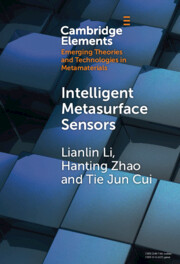169 results
Obstacle avoidance control of UGV based on adaptive-dynamic control barrier function in unstructured terrain
-
- Journal:
- Robotica , First View
- Published online by Cambridge University Press:
- 18 September 2024, pp. 1-14
-
- Article
- Export citation
The long-term spatio-temporal trends in burden and attributable risk factors of major depressive disorder at global, regional and national levels during 1990–2019: a systematic analysis for GBD 2019
-
- Journal:
- Epidemiology and Psychiatric Sciences / Volume 33 / 2024
- Published online by Cambridge University Press:
- 20 May 2024, e28
-
- Article
-
- You have access
- Open access
- HTML
- Export citation
Shared genetic basis and causality between schizophrenia and inflammatory bowel disease: evidence from a comprehensive genetic analysis
-
- Journal:
- Psychological Medicine , First View
- Published online by Cambridge University Press:
- 02 April 2024, pp. 1-11
-
- Article
- Export citation
Effect of dietary selenium intake on CVD: a retrospective cohort study based on China Health and Nutrition Survey (CHNS) data
-
- Journal:
- Public Health Nutrition / Volume 27 / Issue 1 / 2024
- Published online by Cambridge University Press:
- 27 March 2024, e122
-
- Article
-
- You have access
- Open access
- HTML
- Export citation
Morphology, genetic characterization and phylogeny of Moniliformis tupaia n. sp. (Acanthocephala: Moniliformidae) from the northern tree shrew Tupaia belangeri chinensis Anderson (Mammalia: Scandentia)
-
- Journal:
- Parasitology / Volume 151 / Issue 4 / April 2024
- Published online by Cambridge University Press:
- 04 March 2024, pp. 440-448
-
- Article
-
- You have access
- Open access
- HTML
- Export citation
An Integrative Multi-Omics Analysis Based on Nomogram for Predicting Prostate Cancer Bone Metastasis Incidence
-
- Journal:
- Genetics Research / Volume 2022 / 2022
- Published online by Cambridge University Press:
- 01 January 2024, e24
-
- Article
-
- You have access
- Open access
- HTML
- Export citation
Detecting Chlorite in the Chinese Loess Sequence by Diffuse Reflectance Spectroscopy
-
- Journal:
- Clays and Clay Minerals / Volume 54 / Issue 2 / April 2006
- Published online by Cambridge University Press:
- 01 January 2024, pp. 266-273
-
- Article
- Export citation
Manipulating the Laser-Driven Proton Bunch with Plasma Wakefield
-
- Journal:
- Laser and Particle Beams / Volume 2022 / 2022
- Published online by Cambridge University Press:
- 01 January 2024, e2
-
- Article
-
- You have access
- Open access
- HTML
- Export citation

Intelligent Metasurface Sensors
-
- Published online:
- 20 December 2023
- Print publication:
- 01 February 2024
-
- Element
- Export citation
Prospect of ultrahigh-resolution fast neutron absorption spectroscopy based on a laser plasma electron accelerator
-
- Journal:
- High Power Laser Science and Engineering / Volume 12 / 2024
- Published online by Cambridge University Press:
- 30 November 2023, e11
-
- Article
-
- You have access
- Open access
- HTML
- Export citation
Clinical characteristics of 1279 patients with hepatitis E in Tianjin
-
- Journal:
- Epidemiology & Infection / Volume 151 / 2023
- Published online by Cambridge University Press:
- 14 September 2023, e157
-
- Article
-
- You have access
- Open access
- HTML
- Export citation
Geochemistry, zircon U–Pb geochronology and Hf isotope of the early Permian gabbro and high-Mg diorites from the Zhusileng–Hangwula Belt in the northern Alxa area: Petrogenesis and tectonic implications
-
- Journal:
- Geological Magazine / Volume 160 / Issue 7 / July 2023
- Published online by Cambridge University Press:
- 11 August 2023, pp. 1417-1427
-
- Article
- Export citation
Early-initiated childhood reading for pleasure: associations with better cognitive performance, mental well-being and brain structure in young adolescence
-
- Journal:
- Psychological Medicine / Volume 54 / Issue 2 / January 2024
- Published online by Cambridge University Press:
- 28 June 2023, pp. 359-373
-
- Article
-
- You have access
- Open access
- HTML
- Export citation
Granitic magmatism associated with gold mineralization: evidence from the Baizhangzi gold deposit, in the northern North China Craton
-
- Journal:
- Geological Magazine / Volume 160 / Issue 6 / June 2023
- Published online by Cambridge University Press:
- 21 June 2023, pp. 1211-1227
-
- Article
- Export citation
Wnt/β-catenin signalling pathway in breast cancer cells and its effect on reversing tumour drug resistance by alkaloids extracted from traditional Chinese medicine
- Part of
-
- Journal:
- Expert Reviews in Molecular Medicine / Volume 25 / 2023
- Published online by Cambridge University Press:
- 19 June 2023, e21
-
- Article
- Export citation
Wake transitions behind a streamwise rotating disk
-
- Journal:
- Journal of Fluid Mechanics / Volume 953 / 25 December 2022
- Published online by Cambridge University Press:
- 09 December 2022, A24
-
- Article
- Export citation
Dietary inflammatory index, inflammation biomarkers and preeclampsia risk: a hospital-based case–control study
-
- Journal:
- British Journal of Nutrition / Volume 129 / Issue 9 / 14 May 2023
- Published online by Cambridge University Press:
- 18 May 2022, pp. 1528-1536
- Print publication:
- 14 May 2023
-
- Article
-
- You have access
- HTML
- Export citation
Reply to ‘preconception paternal/maternal BMI and risk of small-/large-for-gestational age infant in over 4·7 million Chinese women aged 20–49 years: a population-based cohort study in China’
-
- Journal:
- British Journal of Nutrition / Volume 129 / Issue 2 / 28 January 2023
- Published online by Cambridge University Press:
- 19 April 2022, pp. 365-366
- Print publication:
- 28 January 2023
-
- Article
-
- You have access
- HTML
- Export citation















